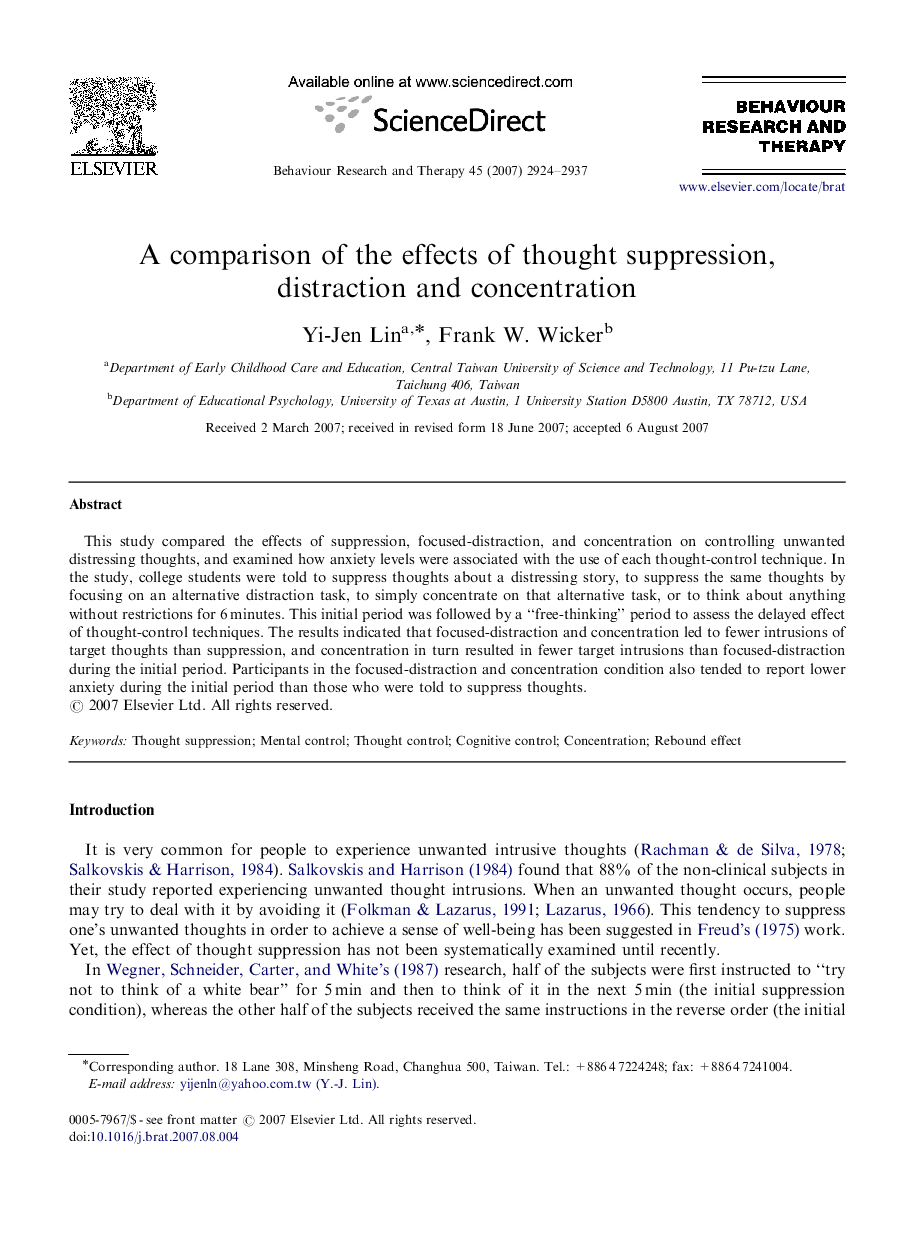| Article ID | Journal | Published Year | Pages | File Type |
|---|---|---|---|---|
| 10444838 | Behaviour Research and Therapy | 2007 | 14 Pages |
Abstract
This study compared the effects of suppression, focused-distraction, and concentration on controlling unwanted distressing thoughts, and examined how anxiety levels were associated with the use of each thought-control technique. In the study, college students were told to suppress thoughts about a distressing story, to suppress the same thoughts by focusing on an alternative distraction task, to simply concentrate on that alternative task, or to think about anything without restrictions for 6Â minutes. This initial period was followed by a “free-thinking” period to assess the delayed effect of thought-control techniques. The results indicated that focused-distraction and concentration led to fewer intrusions of target thoughts than suppression, and concentration in turn resulted in fewer target intrusions than focused-distraction during the initial period. Participants in the focused-distraction and concentration condition also tended to report lower anxiety during the initial period than those who were told to suppress thoughts.
Keywords
Related Topics
Health Sciences
Medicine and Dentistry
Psychiatry and Mental Health
Authors
Yi-Jen Lin, Frank W. Wicker,
